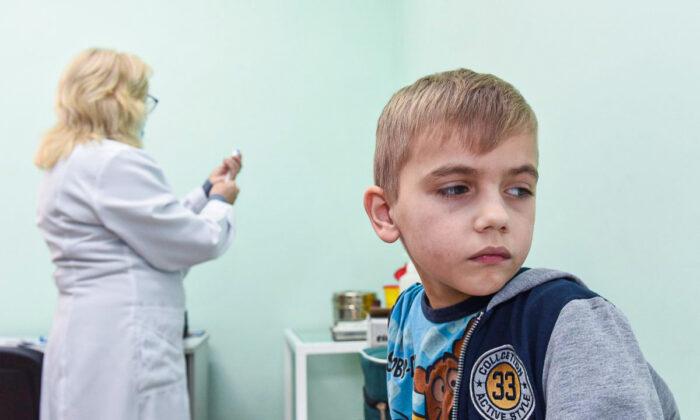The percentage of school-aged American children who’ve received routine childhood vaccines, while still high, has dropped again during the past school year, a new government report says.
During the 2021–2022 school year, according to the report, the coverage among kindergarten children was approximately 93 percent nationwide for each of the four vaccines. It was around 94 percent during the 2020–2021 school year, and 95 percent during the 2019–2020 school year, when children were vaccinated before the COVID-19 pandemic.
All 50 states and the District of Columbia currently require children to take certain vaccines before going to public school, with limited exemptions. The report found that the number of students with exemptions remained steady, at 2.6 percent.
While the overall rate of vaccination is still very high, a one percent dip could mean hundreds of thousands fewer children are taking the shots, the CDC says.
“MMR coverage of 93.5 percent translates to nearly 250,000 kindergartners who are potentially not protected against measles,” the government researchers said in the report. “Clusters of unvaccinated and undervaccinated children can lead to outbreaks of vaccine-preventable diseases.”
MMR vaccines have been widely available since 1971, and are required in 49 states and the District of Columbia for public school enrollment. Iowa is the only exception, as it mandates vaccination against measles and rubella, but not mumps.
The drop in childhood vaccine coverage might have to do with the COVID-19 pandemic’s disruptions to medical services and in-person schooling, said Dr. Georgina Peacock, director of the CDC’s immunization services division, in a press briefing about the report.
Loss of Trust in Public Health
Dr. Monica Gandhi, an expert in infectious diseases at the University of California, San Francisco, said the report reflects “increasing distrust of government and public health,” which she finds worrying.In an op-ed published last November in online magazine CommonWealth, the professor expressed concerns that the distrust surrounding the government’s handling of COVID-19 has spilled over into vaccines that used to have a rather positive public image.
“People who would have vaccinated their children in the past are starting to think differently about vaccines,” she wrote. “In addition to being a critical public health concern, this represents a serious issue with trust in public health authorities and their messengers.”
The poll found other federal health agencies have even lower trust. Only 37 percent of respondents said they have a lot of trust in the National Institutes of Health or the Food and Drug Administration. Meanwhile, less than half of adults report having high trust in the American Red Cross (48 percent), their local health department (44 percent), and their state health department (41 percent).





